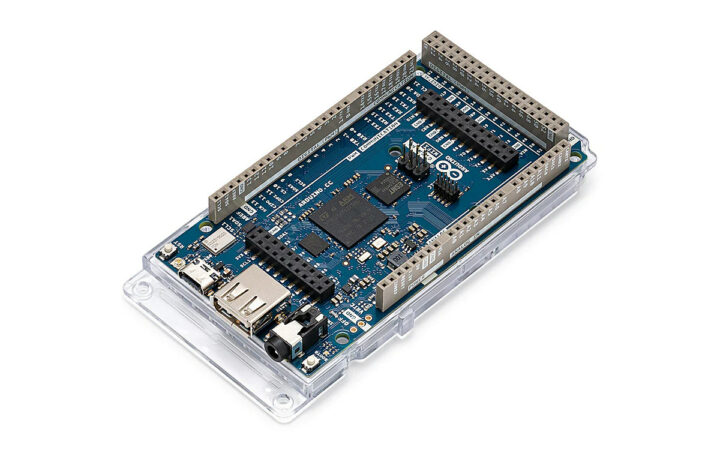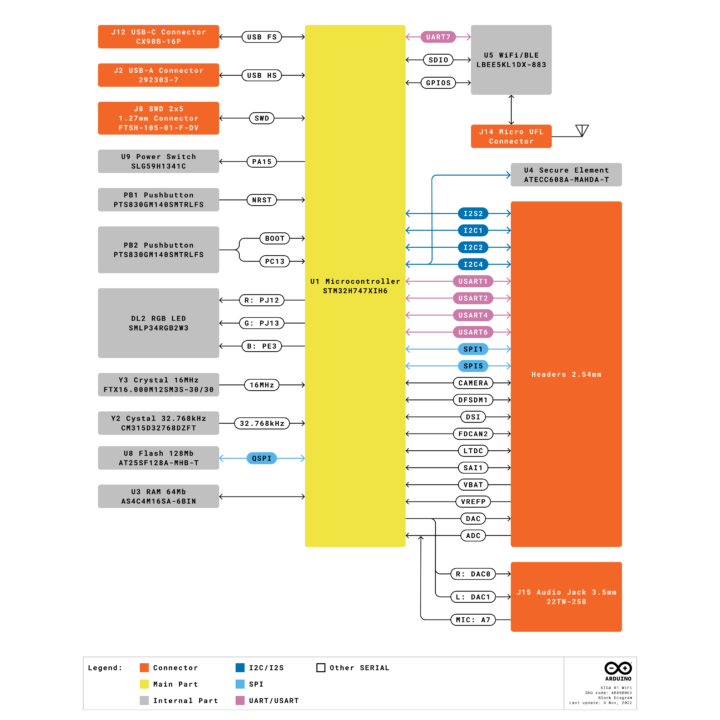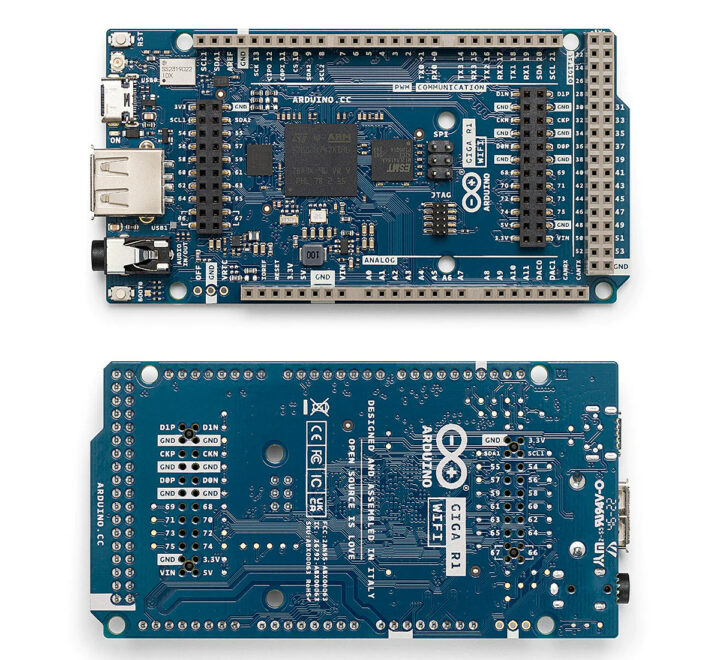Arduino GIGA R1 WiFi board brings the STM32H7 dual-core Cortex-M7/M4 microcontroller found in the Portenta H7 boards to the larger Arduino Mega/Due form factor with up to 76 GPIO pins.
As its name implies, the board also comes with a WiFi 4 (and Bluetooth 5.1) module, as well as an audio jack, a USB Type-C port for programming, a USB 2.0 Type-A host port, and extra connectors for a display and a camera.

Arduino GIGA R1 WiFi board specifications:
- Microcontroller – STMicro STM32H747XI Cortex-M7 @ 480 MHz + M4 @ 200 MHz MCU with 2MB dual-bank Flash memory, 1 MB RAM, Chrom-ART graphical hardware accelerator
- System Memory – 8MB SDRAM
- Storage – 16MB QSPI NOR flash
- Connectivity – 2.4GHz WiFi 802.11b/g/n up to 65 Mbps and Bluetooth 5.1 BR/EDR/LE via Murata 1DX module
- Display – 20-pin header (J5)
- Camera – 20-pin Arducam camera header (J6)
- USB
- 1x USB Type-C port for programming and HID
- 1x USB 2.0 host Type-A port
- Audio – 3.5mm audio jack
- I/Os
- Arduino MEGA headers
- Up to 76x I/O pins (including the camera/display headers)
- 4x UART, 3x I2C, 2x SPI
- 12x PWM
- Up to 12x analog inputs
- 2x DAC
- CAN Bus (external transceiver required)
- VRT (to power the RTC) & OFF (to turn off the board) pins
- 3.3V operating voltage
- 8mA per I/O pin
- Arduino MEGA headers
- Security – Microchip ATECC608A secure element
- Debugging – JTAG connector
- Misc – Reset button, BOOT0 button, RGB LED, power LED
- Power Supply – 6 to 24V via VIN pin
- Dimensions – 101 x 53 mm
It’s not a member of the Arduino Pro family and the Arduino GIGA R1 WiFi loses some of the features from the Portenta H7 series with no support for DisplayPort over USB-C, no on-board 10/100M Ethernet PHY, no high-density connectors, no built-in battery support, and the temperature range is not specified.
Still, the new board has plenty of I/Os, WiFi & Bluetooth connectivity, and a powerful microcontroller that makes it suitable for a range of applications such as robotics, IoT, music, computer vision, and projects requiring real-time processing such as motor control.

Just like the Portenta boards, the Arduino GIGA R1 WiFi board can be programmed with the Arduino IDE or MicroPython, and the company says that thanks to the dual-core design two programs can run simultaneously with both cores running Arduino code, or one core running an Arduino sketch and the other a MicroPython script. You’ll find instructions to get started on the documentation website.
The Arduino GIGA R1 WiFi board is available now for $72.82 or 68.70 Euros on the Arduino store.

Jean-Luc started CNX Software in 2010 as a part-time endeavor, before quitting his job as a software engineering manager, and starting to write daily news, and reviews full time later in 2011.
Support CNX Software! Donate via cryptocurrencies, become a Patron on Patreon, or purchase goods on Amazon or Aliexpress





